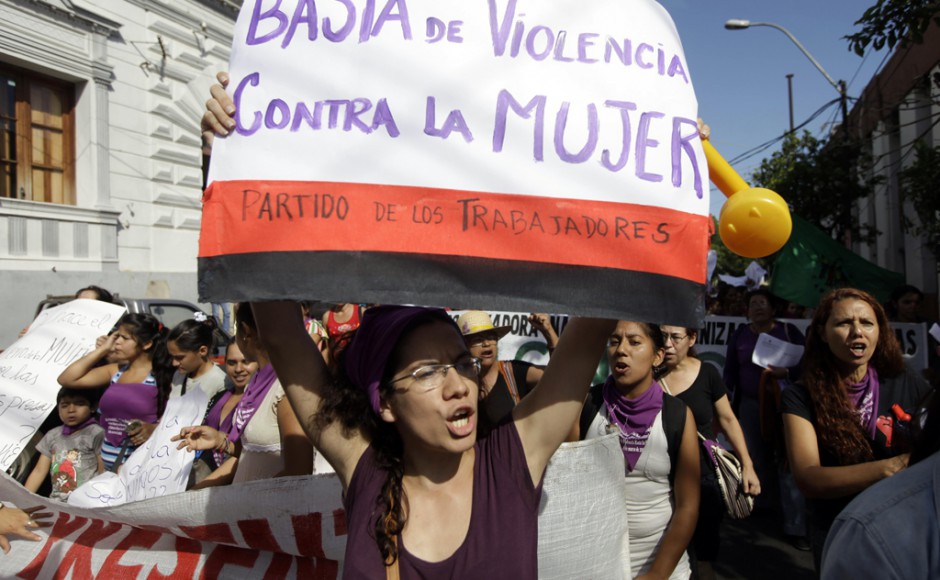In my forthcoming Note, titled Filling the Gap of Domestic Violence Protection: Returning Human Rights to U.S. Victims[1] I argue that “[b]y failing to hold states accountable for enforcing mechanisms of DV protection, the U.S. federal government fails to satisfy its responsibility assumed by the American Declaration on the Rights and Duties of Man (“American Declaration”), thereby violating U.S. citizens’ human rights.”[2] A topic of discussion in this Note is the United States’ position as a leader on the world stage and a member of the Organization of American States (OAS), an organization of thirty-five member nations[3] that aims to “ ‘strengthen the civic conscience of the American peoples’ for the purpose of the effective exercise of democracy, the observance of the rights of men, and greater integration.”
Expanding from the Note’s focus on how the United States can improve, let us look further into how the United States compares to its OAS compatriots. In Argentina, 275 women lost their lives this year as a result of gender-based violence. This summer, thousands marched in Buenos Aires in a movement against domestic violence. Argentina’s population is approximately 44 million, resulting in a rate of 6.25 gender-motivated murders per 1,000,000. By contrast, “[m]ore than 1,600 women were murdered by men in 2013” in the United States when the population was approximately 318 million, resulting in a rate of 5.03 gender-motivated murders per 1,000,000.
By contrast, domestic violence incidents in Costa Rica were on the rise in 2012, amounting to 222 incidents reported per day. With a population of 4.1 million, that amounts to 55.5 incidents per 1,000,000. By contrast, in the United States, 20,000 calls are made per day to domestic violence hotlines,[4] amounting to approximately 69 incidents per 1,000,000.
Overall, state sovereignty is a roadblock to national governments that have agreed to work towards international goals but are unwilling to undermine their control over their domain— the United States included.[5] As I argue in Filling the Gap, domestic violence is a worldwide epidemic that should be curbed, especially by the countries that have agreed to respect human rights by signing the Charter of the OAS. The United States has an opportunity to set the international tone and heighten protection within its borders.
- Melanie Kalmanson, Note, Filling the Gap of Domestic Violence Protection: Returning Human Rights to U.S. Victims, 43 Fla. St. U.L. Rev. (forthcoming 2016).↑
- Id. at Introduction.↑
- The members of the OAS are: Antigua and Barbuda, Argentina, Bahamas, Barbados, Belize, Bolivia, Brazil, Canada, Chile, Colombia, Costa Rica, Cuba, Dominica, Dominican Republic, Ecuador, El Salvador, Grenada, Guatemala, Guayana, Haiti, Honduras, Jamaica, Mexico, Nicaragua, Panama, Paraguay, Peru, Saint Lucia, Saint Vincent and the Grenadines, St. Kitts & Nevis, Suriname, Trinidad and Tobago, United States, Uruguay, and Venezuela.↑
- Kalmanson, supra note 1, at Introduction.↑
- See, e.g., http://digitalcommons.wcl.american.edu/cgi/viewcontent.cgi?article=1674&context=auilr, at p.4.↑


